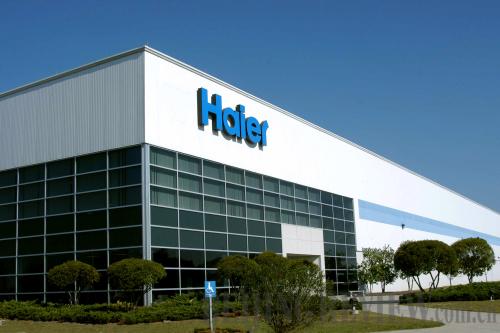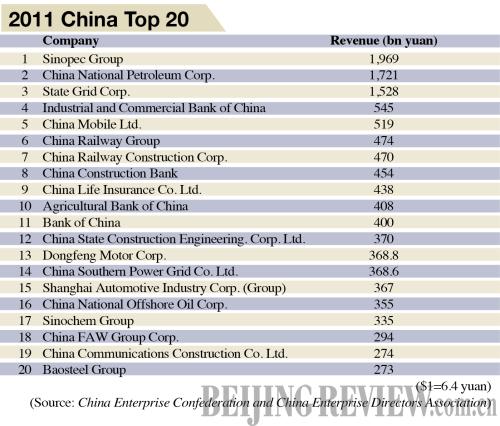 |
|
OVERSEAS INVESTMENT: A refrigerator factory in the United States built by Haier Group, which ranks 63rd on the 2011 China 500 list (CNSPHOTO) |
The 23 industries where no Chinese companies are incorporated in the world top 500 list are highly competitive in consumer research, global brand, core technologies, global supply chains and long-term intensive input in research and development.
"Deficiency in competitive industries reflects a lack of competitiveness for large Chinese enterprises," said Miao Rong, Deputy Director of the Department of Research of CEC.
Large companies often decide technological standards and the direction of industrial development, Miao said. World's 80 percent of input in research and development, 70 percent of technology innovations and 60 percent of technology transfers are completed by the world top 500 companies. However, China's top 500 companies' spending in research and development only accounted for 1.41 percent of their sales revenue. "Growth of most of China's top 500 is not driven by technology," said Miao.
Many of the China top 500 companies have grown through mergers and acquisitions (M&As). Among them, 182 companies reported acquiring 1,112 companies.
In addition, the 2011 China top 500 list is still dominated by state-owned or state-holding enterprises, while only one third are POEs. The structure has not changed during the past 10 years, and the scales of large state-owned enterprises (SOEs) is still much larger than those of large POEs.
A CEC report named Tendency, Problems and Suggestions of Development of Chinese Large Enterprises in 2011 says Chinese enterprises need to improve their comprehensive strength and international competitiveness and the government should create an open and fair market competition environment to facilitate development of enterprises.
The report says to be larger and stronger, Chinese enterprises should first enhance their independent innovation capability. Such capability means not only the capability to research and develop core technologies and products, but also the capability of innovating in marketing and management patterns.
"There is no way out if we make no breakthroughs," said Zhang Ruimin, CEO of Haier Group, a state-owned home appliance maker. He said Chinese enterprises have entered an innovation-driven stage. At present enterprises need to be more flexible in marketing and the organizational structures should be changed.
The CEC report says enterprises also need to utilize resources in both domestic and foreign markets, particularly to fully understand investment environments in foreign countries and strengthen cooperation of different enterprises within the industrial chains.
"Many enterprises have little experience in overseas development and are fragile against risks. Enterprises should strengthen cooperation, thus to enhance capability of negotiation with foreign companies and reduce investment costs. For example, enterprises in manufacturing and infrastructure construction industries can work together to develop overseas market," said Li Jianming, Vice Chairman of CEC.
At present the government's supervision and services for large enterprises are not balanced and some problems in the mechanisms involving the development of POEs have not been solved for many years. Many POEs on the 2011 China top 500 list are appealing that the government examine and clear market access restrictions established by supervisors of monopoly industries, formulate mechanisms to promote bilateral flows of capital between SOEs and POEs, regularly examine newly issued laws, regulations and provisions on corporate development so as to create a better environment of laws and policies for the development of POEs.
"Financing difficulty is still the biggest problem restricting development of POEs. When vigorously encouraging and supporting SOEs, the government should also further encourage development of POEs," said Liu Yonghao, President of New Hope Group, a POE ranking 145th on the 2011 China top 500 list.

| 